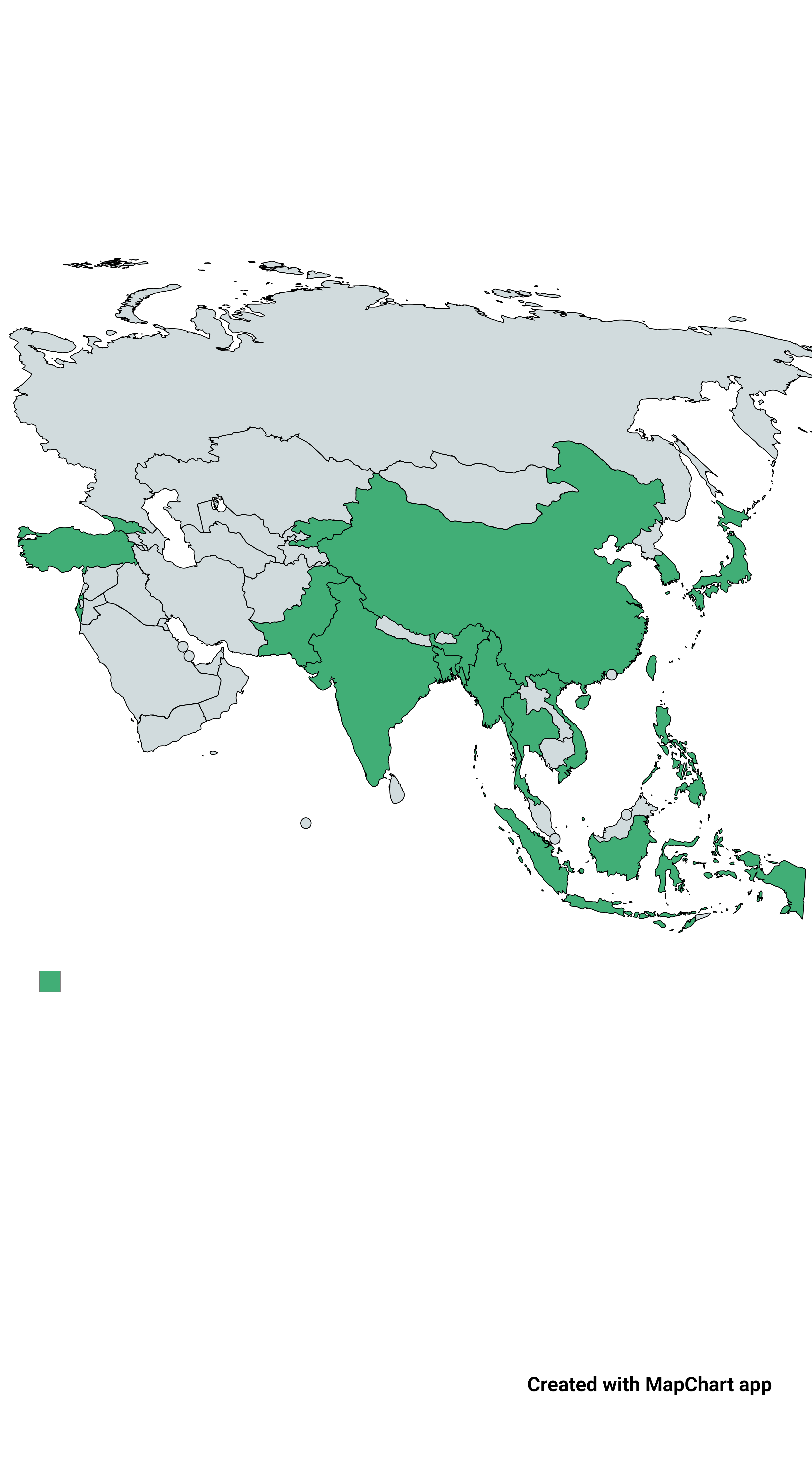Map of Asian Countries with Female Leaders


Marcus Rodriguez
Historical Geography Expert
Marcus Rodriguez specializes in historical cartography and geographic data analysis. With a background in both history and geography, he brings unique...
Geographic Analysis
What This Map Shows
This map provides a visual representation of Asian countries that have had or currently have a female head of state or government. It highlights the significant role women have played in leadership across diverse political landscapes in Asia. By showcasing these countries, the map underscores the progress and challenges of female political representation in the region.
Deep Dive into Female Leadership in Asia
Throughout history, the role of women in political leadership has evolved dramatically. In Asia, this evolution has been marked by a series of groundbreaking appointments and elections that have redefined traditional gender roles. Countries like India, Bangladesh, and Sri Lanka have been at the forefront, with female leaders holding the highest offices. For instance, Indira Gandhi served as Prime Minister of India from 1966 to 1977 and again from 1980 until her assassination in 1984, making her one of the most prominent female leaders in the region.
Interestingly, Bangladesh has also seen two female Prime Ministers, Sheikh Hasina and Khaleda Zia, who have each led the country multiple times since the 1990s. This indicates a trend where nations with female leadership can inspire a more inclusive political culture, potentially influencing the next generation of female leaders.
On the other hand, not all countries have embraced female leadership equally. In places like Afghanistan, women’s political participation has faced significant challenges. While there have been female leaders, such as Ashraf Ghani’s former Vice President, the overall representation of women in government remains low due to sociopolitical barriers and cultural norms.
Moreover, the Philippines has had its share of female leadership, with Corazon Aquino becoming the first female president in Asia in 1986. Her presidency marked a pivotal moment in the country’s history, and since then, the Philippines has continued to see women in significant political roles. This demonstrates how female leadership can serve as a catalyst for change, promoting democratic values and social progress.
What's fascinating is that the presence of female leaders doesn’t always correlate with gender equality in the country. For example, while Myanmar had Aung San Suu Kyi as State Counsellor, the nation has continued to face severe criticism for its human rights record and treatment of ethnic minorities. This highlights that having women in power does not automatically lead to better conditions for all women in society.
Regional Analysis
When analyzing the map regionally, it becomes evident that South Asia has been a significant hub for female leadership. Countries like India, Bangladesh, and Nepal have seen women rise to the highest ranks of government. In contrast, Southeast Asia, while having notable leaders like former president Megawati Sukarnoputri of Indonesia, still lags behind in terms of consistent female representation.
In Central Asia, female leaders have been less common, with only a few exceptions, such as the former President of Kyrgyzstan, Roza Otunbayeva. This stark contrast begs the question: What cultural or political factors contribute to these variations in female leadership across the continent?
Moreover, in the Middle East, while the situation appears challenging, there have been gradual changes. Countries like Iraq and Lebanon have seen increased female participation in politics, though they still face societal resistance. The map underscores these differences, showcasing not just the presence of female leaders, but the broader implications of their leadership on the political fabric of their nations.
Significance and Impact
The significance of female leadership in Asia cannot be understated. It embodies a shift toward a more inclusive governance model and reflects changing societal norms. Countries with female heads of state often experience different leadership styles that prioritize collaboration and community engagement, fostering a more diverse political environment.
However, the impact of having women in power extends beyond political representation. It plays a critical role in shaping policies that address issues pertinent to women and children, such as healthcare, education, and social welfare. As we look to the future, the potential for increased female leadership in Asia seems promising, especially as younger generations continue to advocate for equality and representation.
In conclusion, this map serves as a powerful reminder of the strides made by women in leadership roles across Asia. However, it also highlights the ongoing challenges that still exist, suggesting that while progress has been made, there is much more work to be done to achieve true gender parity in political representation across the continent.
Visualization Details
- Published
- October 18, 2025
- Views
- 64
Comments
Loading comments...